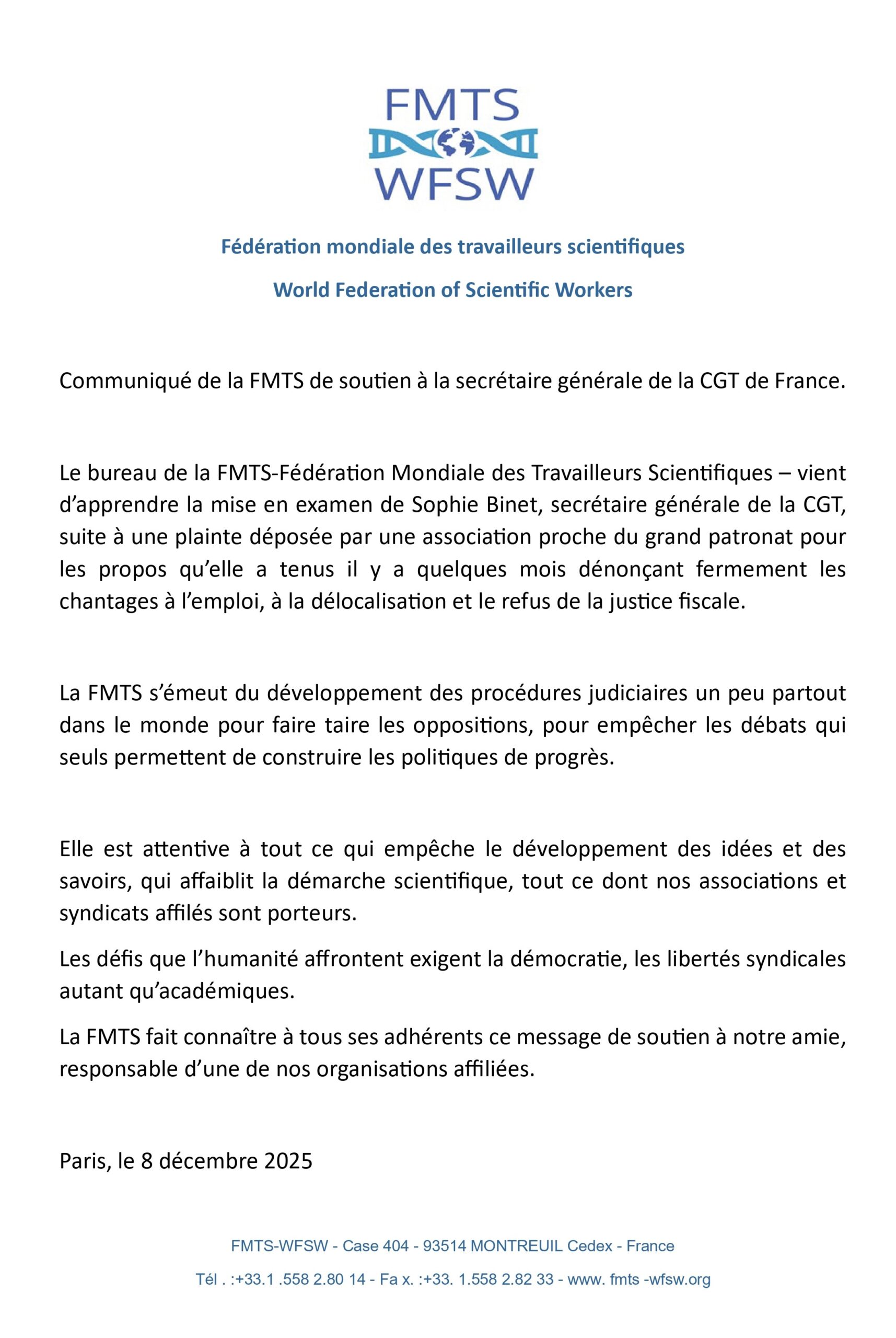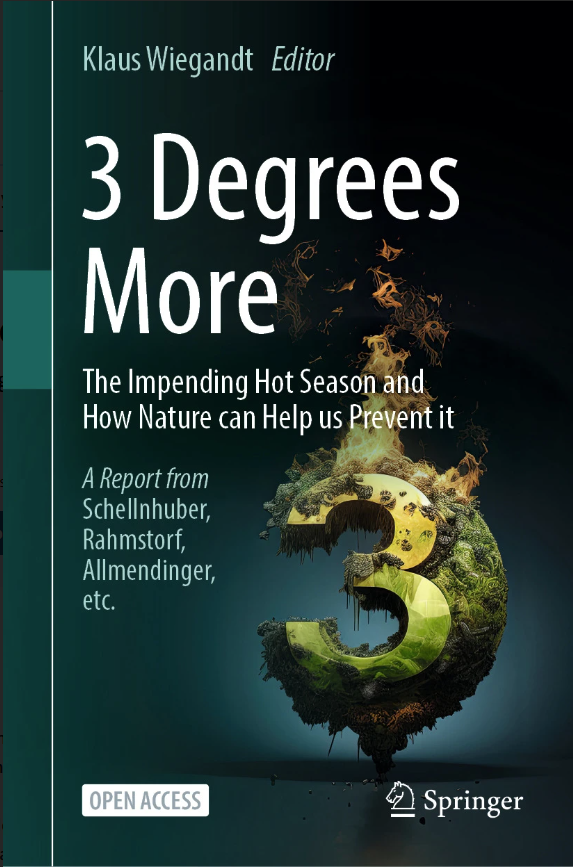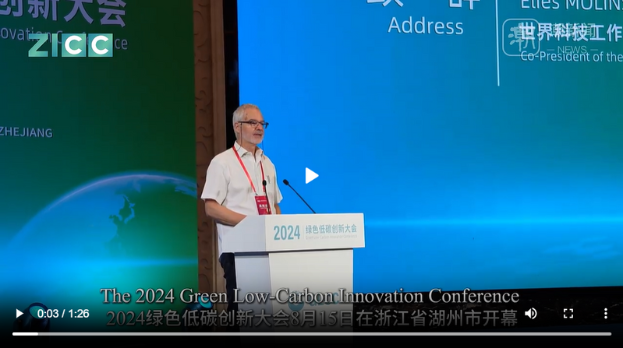Threat of Nuclear War and the Possible Consequences of the Use of Nuclear Explosives
For many decades, the dangers associated with the use of nuclear explosives in warfare have been a major concern of the World Federation of Scientific Workers. The design of nuclear weapons of increasing sophistication and yield, its production and stockpiling by a handful of states has been and is going on since the very first nuclear explosions that took place in the middle of the twentieth century. Immediately after the 2d World War a large number of scientific workers including several Nobel laureates have alerted public opinion and attempted to brief influential political decision makers on the dire consequences of nuclear explosions on people’s lives and on the environment.
Our first president and co-founder of WFSW, Frédéric Joliot-Curie, resigned his post of Head of the French High Commission on Atomic Energy as the French government decided to develop an atomic weapon.
Since 1945 and until the end of the so-called “cold war” the total number of nuclear test explosions exceeded 2000 of which more than 500 were conducted in the atmosphere. The total yield of detonated explosives is estimated as the equivalent to 540 million tons of TNT, a number approximately 8000 times that of the blast yield of the bomb dropped on Hiroshima. The detonation of a nuclear explosive can lead to massive destructions both of living beings and of inert structures. Through a range of different effects it may cause immediate death but also long term time delayed health damages due to the direct exposure to radiations and to the environmental contamination caused by the fallout of radioactive dust. As a consequence of the deflagration, temperatures of several thousand degrees can arise in large areas surrounding “ground zero” as well as wind speeds that can exceed a thousand kilometers per hour. These effects lead to enormously destructive firestorms.
Notwithstanding the several agreements and multilateral treaties aiming at the total ban of nuclear tests, non-proliferation of nuclear weapons and global nuclear disarmament, the fact is that the threat of nuclear war is still present in our days. The threat is probably more acute today than in the period of the cold war. Such a threat if materialized will put in danger the very survival of our species on the planet.
Under the New START Treaty that entered in force in February 5, 2011, the aggregate number of nuclear warheads on Deployed ICBMs, on Deployed SLBMs, and Nuclear Warheads Counted for Deployed Heavy Bombers, was 1643 for the Russian Federation and 1642 for the USA, as of September 1, 2014. The term “deployed” appears to be equivalent to “ready to launch”. The total number has significantly increased since the previous exchange of data between the parties (March 2014) so that the current figures are already in violation of the limit prescribed by the treaty signed in 2010.
The magnitude of these numbers is difficult to justify only by considerations of imaginable military needs. Anyhow they are a very serious source of concern especially if one is aware of the fact that a mere one percent of the total explosive yield of the deployed warheads if deflagrated, would be sufficient to put an end to the very possibility of survival of higher forms of life on the planet including that of our own species. According to a variety of sources the possibility of a preemptive nuclear strike by one nuclear power so that the opponent’s arsenal is destroyed to such an extent that makes retaliation by the adversary impossible or ineffective, is seriously considered in high level circles both military and political who underestimate the consequences a confrontation opposing nuclear armed states.
The equilibrium that existed during the cold war between opposite sides is being gradually eroded in important aspects. The United States withdrawal in 2002 from the Anti-Ballistic Missile Treaty on the one hand as well as the progressive expansion to the east of territories covered by the NATO alliance, contrary to past assurances dating from the early years of the “cold war”, are seen by the Russian Federation as threatening steps that jeopardize its security. More recently the events taking place in the once Soviet Republic of Ukraine adjoining the Russian Federation have exacerbated such concerns. On May 1st, 2014, a bill was introduced in the US Senate entitled “The Russian Aggression Prevention Act” (RAPA) which has been referred to the Committee on Foreign Relations for consideration.
There is strong evidence that both the USA and the Russian Federation appear to be preparing for a direct military confrontation, a scenario that has been carefully avoided during the period of the “cold War”. In his speech before the United Nations General Assembly, on September 24, the president of the United States directly referred as the problems demanding urgent attention: the outbreak of Ebola; Russian aggression in Europe; and the brutality of terrorists in Syria and Iraq.
Numerous peer-reviewed scientific studies predict the possible consequences of a war fought between countries heavily armed with nuclear weapons. Scientific workers bear the responsibility of alerting their fellow citizens to the dangers involved for life on the planet should such a path be followed. The detonation of only a small fraction of the nuclear explosives presently deployed by the main nuclear powers be they strategic or tactical weapons, would have long term environmental effects bringing about catastrophic global weather changes that could persist for a number of years. Adding to the destructive effects of the nuclear blast and the short and long term effects of the emission of radiations and radioactive dust, the weather changes associated with the so-called “nuclear winter” would eliminate growing seasons for years so that most humans and large animals would starve to death.
According to credible sources[i] a nuclear war between Russia and the United States, even after the arsenal reductions planned under START 2, could produce a nuclear winter. Even a “small” regional nuclear war, where less than 1 percent of the total yield of the presently deployed nuclear heads “could produce so much smoke that temperatures would fall below those of the Little Ice Age of the fourteenth to nineteenth centuries, shortening the growing season around the world and threatening the global food supply.”[ii] Most people are completely unaware of the quality and size of these effects. Most people do not know that a single strategic nuclear weapon can easily ignite a massive firestorm over 250 km2, and that the US and Russia each have many thousands of these weapons ready for immediate use.
Students in public schools should be normally taught about nuclear weapons. Scientific workers should campaign to change this situation and in every other possible way contribute to achieving the objective of a world free of nuclear weapons.
[i] “Self-assured destruction: The climate impacts of nuclear war”, Alan Robock and Owen Brian Toon, Bulletin of the Atomic Scientists, 68 issue 5,September 2012.
[ii] Idem ibid.




